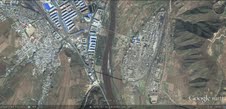Setting up a brewery in North Korea seemed like a good idea to Harry Kim and his Chinese friends two years ago. Everyone likes beer, even in one of the world’s most closed and least understood countries, they reckoned.
Kim and his partners even got the beer flowing after workers strapped equipment onto a truck in the Chinese border town of Tumen and drove it to the North Korean coastal city of Chongjin. Chinese engineers taught the locals how to brew. City officials loved the taste, he said.
But the small Chinese-North Korean venture ran aground within months after failing to get final approval from authorities in Pyongyang.
Kim’s experience is an illustration of both the challenge and the potential of doing business in North Korea, which has grabbed global attention in recent weeks with its threats to wage nuclear war on South Korea and the United States.
“It wasn’t rejected. We just waited. The central government didn’t come and say ‘no’, but the documents were just never issued and so we eventually gave up,” said Kim, a Chinese national of Korean descent living in Tumen in China’s northeastern Jilin province.
…
There is little public information on North Korea’s beer market but one thing seems clear – demand outstrips supply.
Troy Collings, a director at Young Pioneer Tours, a travel operator based in China which takes groups into North Korea and has organised brewery visits, said there were probably less than a dozen locally made beers available in the country.
In Pyongyang, two hotels concoct their own microbrews. The Rakwon department store creates its own eponymous beer, too, he said.
“They can’t produce enough for the domestic market,” said Collings.
The opportunity was clear – and reinforced for Kim when he saw the elite in Chongjin drinking a lot of Heineken and Corona.
So, in mid-2011, Kim and two friends joined up with a North Korean businessman to put the brewery plan in motion.
Approval from Chongjin city came easily, he said. The province, North Hamgyong, gave the green light too. And the first of three investments in equipment and supplies – the initial one worth about 200,000 yuan – was made.
Since North Korea has no system of credit and the risks of investing were high, Kim and his partners tied the beer project to seafood exports.
Before each investment was made, they were allowed to buy a cargo of North Korean seafood to sell in China. The first was about 50 tonnes of squid, he said.
…
It took about nine hours to drive from Tumen to Chongjin with the brewery equipment, including stops at customs.
The equipment was installed quickly and Chinese engineers showed the North Koreans how to brew. Soon, suds were flowing. The product was dubbed Wongang, or ‘river source’, beer.
On the first day of business the investors invited senior city and provincial leaders to the brewery for a sample. All approved, Kim said.
But the new brewery could not ramp up production without authorisation from Pyongyang, which never came despite months of waiting. There was never a response and the investors never got an explanation.
“If you push too hard it could raise suspicions,” Kim said.
It was a pity, because the North Koreans were good workers, he said, citing how the investors overcame the frequent power cuts which made it hard to use a computer to monitor the brewing process.
Instead, the investors stationed North Korean workers at each of the pressure gauges on the brewing equipment in 12-hour shifts. The workers were told if the dial reached a certain level they should turn a knob to let off pressure.
“They got chairs and sat there looking at the gauges, not sleeping all night, one person at each position,” said Kim.
Thanks to the squid hedge, the Chinese investors basically broke even. Kim now runs his restaurant in the space where the brewing equipment was stored before it was hauled to Chongjin.
Some day Pyongyang may give the green light, Kim says, but he is not holding his breath.
“As I was leaving they said ‘It’s not that we don’t want to do it, and it’s not that our senior leaders or the central government don’t want to do it, but we just don’t have practical experience with this kind of thing’.”

